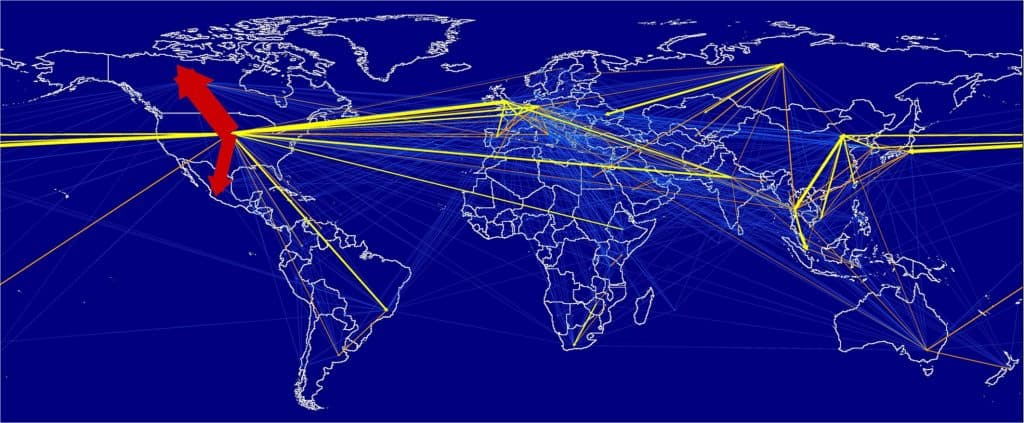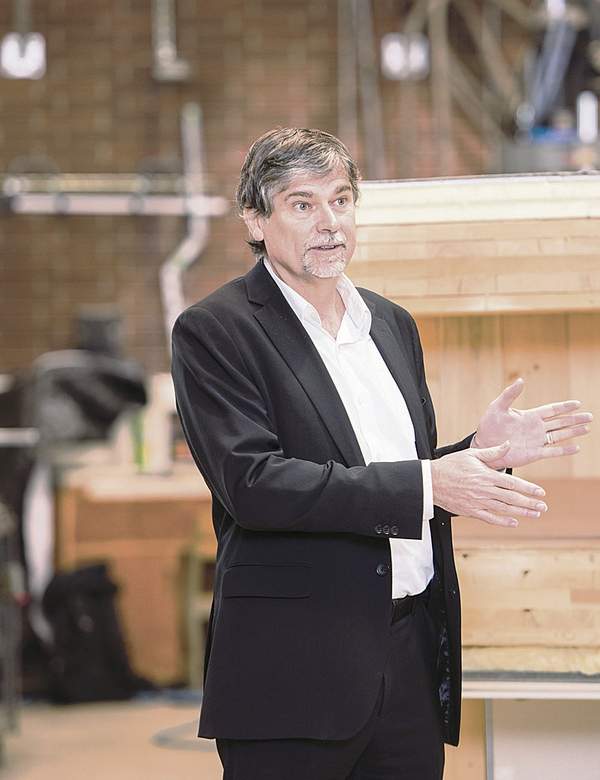Interesting press release….
Norbeck Society
P.O. Box 9730
Rapid City, SD 57709
For Immediate Release
Alarming New Report Indicates Unsustainable Logging on Black Hills
National Forest
RAPID CITY (July 10, 2018) – A just-issued United States Department of
Agriculture report, Forests of South Dakota 2017, shows a trend of
depletion of standing merchantable timber on the Black Hills National
Forest.
The 2017 report reveals that for the study period ending in 2017, there
was 10 times the volume of timber harvested compared to net timber
growth on all forest land within South Dakota. Further, the report
shows that for ponderosa pine (the primary commercial species in the
Black Hills), there was more volume lost to mortality or damage, rot,
etc. than there was volume gained in growth. The ponderosa pine forest
was dying faster than it was growing primarily due to the mountain pine
beetle infestation. This trend will diminish as the mountain pine
beetle activity decreases, but it still indicates that there have been
significant impacts to the standing inventory on the forest. The Black
Hills National Forest needs a chance to recover, and this report shows
that there are serious issues with the sustainability of timber
management on the Forest at the current timber harvest levels.
The Forest Service is required by law to manage the National Forests for
multiple uses and sustained yields of timber. This simply means that
they cannot cut more wood on an annual basis than what grows. This basic
forestry tenet is taught at every Forestry school in the country. The
tool that ensures these sustained yields is known as an Allowable Sale
Quantity (ASQ), and it is used as a ceiling, not a target. For the
Black Hills, the ASQ was set in the 1997 Forest Plan and was based on a
forest with almost double the current standing inventory.
Since 1997, about one third of the Forest has experienced mortality due
to wildfire and insect infestation. These impacts alone should amply
indicate that the ASQ from 1997 is no longer valid. In response to a
mountain pine beetle epidemic, logging operations were increased and for
much of the past decade, harvests have been above the ASQ. Harvests
have not been lowered since that time even though the mountain pine
beetle epidemic was declared over in 2016.
Awkwardly, the Black Hills National Forest is in the process of
approving the Black Hills Resilient Landscapes Project, which calls for
185,000 acres of logging and clears the way for high harvest volumes to
continue. Concerns are growing over the long-term sustainability of the
forest ecosystem and the timber industry it supports. Further concerns
are for the associated regional tourism industry and the high quality of
life enjoyed by area residents.
During a recent Black Hills Resilient Landscapes Project Objection
Resolution Meeting with the Rocky Mountain Region Deputy Regional
Forester, Jacqueline Buchanan, the Norbeck Society used part of the
allotted time to discuss the depletion trend of the standing inventory
of timber. Norbeck Society asked that language be added to the final
Record of Decision that would put limits on the amount of acres that
could be released out of the BHRL project each year, so that annual
sales of timber could be tapered down until an ASQ commensurate with
current standing volumes could be determined.
The Objection Response by the Forest Service is an assertion that the
ASQ set in the Forest Plan of 1997 is valid and that they plan to
continue with the high harvest volumes until the Forest Plan is revised,
which could take as long as eight more years. Despite losing a
significant portion of the forest to several large wildfires and
mountain pine beetle infestations since 1997 the Forest Service
maintains that the ASQ from the 1997 Forest Plan is still valid, and
shows no inclination to make adjustments to annual timber sales. This
is a cavalier response that ignores the reality of the current
situation.
The Norbeck Society views it as unfortunate that what was supposed to be
a project to promote resilience on the Forest will actually result in
unnecessary and even harmful harvesting of big trees from areas that
essentially pose no threat of insect infestation or catastrophic
wildfire. In addition to the worry over the viability of the timber
industry in the future, being unwilling to manage for sustained yields
also has serious implications for the balance of uses on the forest and
for the livelihoods and quality of life for people in all walks of life
who depend on the health of the Forest. A concerned public cannot
accept this. The Black Hills National Forest is part of a portfolio of
assets owned by every American and it is important that it is managed
for sustainability.
Members of the press or public may wish to see Annual Reports of Forests
of South Dakota from previous years:
https://www.nrs.fs.fed.us/fia/data-tools/state-reports/SD/default.asp
Forests of South Dakota 2017 report:
https://www.fs.fed.us/nrs/pubs/ru/ru_fs158.pdf
Black Hills Resilient Landscapes Objection Response:
https://data.ecosystem-management.org/objections/displayDoc.php?doc=V1dwS1MyTldjRmhVYWtKb1ZucHNNVmt6Y0hwTlZUVnhWVlJDVDFwNk1Eaz0=
Black Hills Resilient Landscapes Project page:
https://www.fs.usda.gov/project/?project=49052
Media Contact:
David Miller, Norbeck Society Steering Committee
605-484-0055
[email protected]




